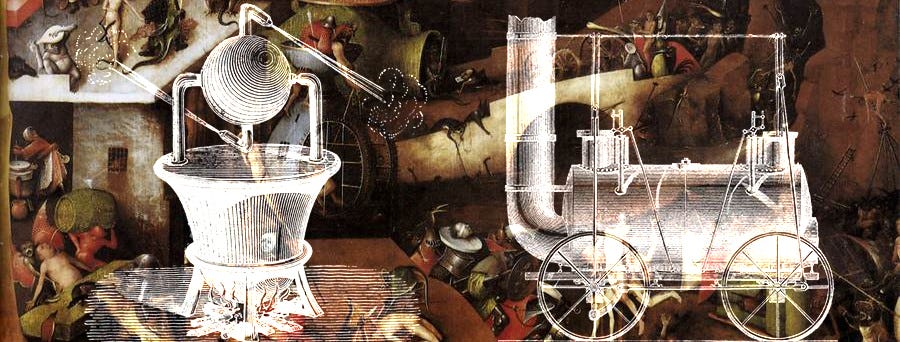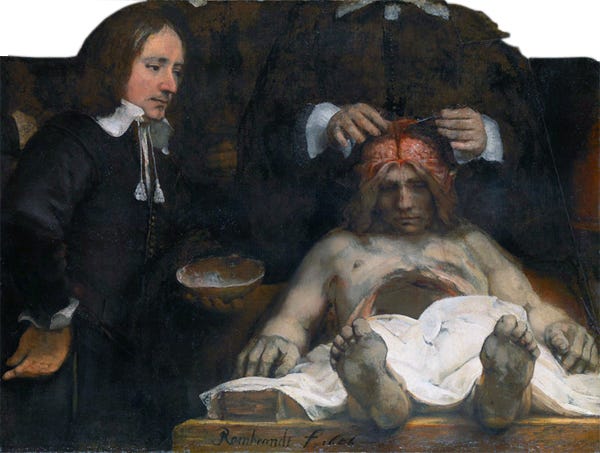AI has a massive disruptive quality on the creative sector. Is AI going to benefit us, or will it create a new dark age for innovation?

In the early first century, the first steam engine was invented by a Greek engineer named Heron of Alexandria. The Aeolipile, as it was called, did not spark an industrial revolution in ancient Rome, but much rather was put away for almost two millenniums.
That is until the steam engine came. The invention of steam-powered sparked a massive boom in innovation that reshaped the world, setting up a pretense for modern life. Still, that new way of life has given humanity another huge crisis, the climate crisis.
From steam to coal to massive industries, the planet has quite literally changed. We have created a world that is getting less and less inhabitable and more hospitable to our existence. That was never meant to happen, but it still happened.
Fast forward to the 21st century, and we are witnessing the rise of another groundbreaking technology — Artificial Intelligence (AI). AI can be considered ancient in the modern context, with the first AI program being developed in the 1950s. However, it is only in recent years that we have seen massive adoption of AI in various industries, from finance and healthcare to marketing and education.
But with AI come some great risks as well. We all know the common risks, such as bias, copyright and unpredictability. But today I want to talk about something else, which might impact our existence in the long run.
AI might kill innovation
AI systems are inherently based on the past, analyzing data to identify patterns and predict outcomes based on that exact past. All outcomes will always be based on something that happened before. Although it might not be explicitly linked, there is a foundation in the past for every output made. Ideas that existed before will just be repeated.
If we were to massively adopt AI, as we are doing now, we are creating an environment where new ideas will not exist. There is no inherent creativity in artificial intelligence, at least in my opinion. This will make it so that AI as a replacement for creatives will lead to a homogenization of ideas and a lack of diversity in thought.
So why should we care? Is there a problem with living in a world without innovation? I think there is. We can only expect growth within our lives through innovation, socially or technically. As our values change so do our needs. Innovation is a way to make ourselves future-proof.
Is creativity unique to humans?
There is something to be said about humans working the same way. Our ideas are based on our experience and knowledge, things we heard or saw during our life.

Still, the way we piece together information is incomparable to any algorithm in existence now. AI has proven to be surprising in its capabilities, and it might just be able to reach true creativity. But we are clearly not there yet.
By adopting AI on the scale that we are doing now we might take innovation out of the loop. If we were to not innovate beyond the point of truly creative artificial intelligence and kill innovation now, we will never be able to get that far, and never see true creative artificial intelligence.
How AI and innovation can live together
AI and innovation are not mutually exclusive. In fact, I routinely use AI in my daily work. When programming, writing or creating images, it will give me a boost in creativity.
In the case of writing, I might now have to think out the best way to phrase things. In the case of programming, I can use quick code snippets. In the case of graphic design, it will help me find the perfect picture.
The way these systems, like Copilot, OpenAI and Midjourney are designed is what makes them innovation beneficiaries, not innovation killers. They allow for AI-assisted work processes, instead of AI replacing the whole process.
And that is how we keep the human in the loop. By designing AI human-computer interaction in such a way that it leaves the creativity to the human, we will always have true creativity within the process.
It is up to us, as UX designers, to create these interactions with AI systems. Never should AI be used as a fully standalone creative process, but rather as a brainstorming partner, a content writer or a sketch artist.
How to design AI interactions
To all of us creatives, and designers in whatever form, I want to stress the fact that we are ultimately creating these systems. We are designing AI into a certain shape, in which we have more or less space for innovation.
While AI presents an array of exciting possibilities, it is important to exercise caution. As designers, it is vital to consider the implications of our designs on a broader scale. This necessitates contemplating the impact of AI within our designs, and its wider effects on society.
“Artificial Intelligence shapes how we think, feel and behave. It drives the decisions that define our future.
We have the responsibility to use this potential for humane technology. Building an AI based on our diverse values and needs requires thoughtful design.” — Website UX of AI
How do we do that? How do we create human-computer interactions that allow for AI to be a tool rather than a replacement?
Human input
First of all, we should always leave room for our own human creativity. Start with a human idea, a human spark of creativity, and let that be the input of the algorithm. Through such interaction, we can assure that human creativity is part of the generative process.
Contest the outcome
Another good example can be to have the possibility to contest the outcome of the algorithm. Do you want a new picture, make sure the AI is able to generate one.
Contestability puts the human at the end of the output. Judgement can be done by a human after something has been generated. Then can he or she decide on the implementation of the outcome.
Know when not to use it
Or maybe just leave it up to humans. There are various reasons why certain tasks are better left to humans. For instance, some tasks require the ability to comprehend emotions or motivations, which is an ability unique to humans.
There may be inherent value in performing a generative task. Replacing a whole UX team with AI can have unexpected consequences that will make any manager nervous.
Humans provide a sense of dignity or enjoyment. There may be instances where subjective evaluation is necessary, such as making ethical or moral decisions. This becomes especially true in human-centred design (HCD) practices.
A balanced approach that considers both the advantages and disadvantages of automation should be taken. This would help to ensure that the use of AI is optimal and that tasks that require human intervention are not neglected.
Just like with the steam engine we now find an amazing disruptive technology at our fingertips. It comes with a lot of potentials to do good things for any one of us, to bring humanity forward.
But just as the steam engine resulted in a climate crisis, AI might kill innovation globally. AI is inherently based on the past, and true creativity is, in its current state, only available through humans.
That is why we should always think about a way to include humans in any way we use AI, especially when designing AI systems. We should not create a close-looped AI, but always have the human set up in that system, at the front or at the back.
When we as designers of this new AI era, we have to think about the implication of our interactions on human creativity and leave room for that to exist. Only that way we can ensure that we will not end up in a new dark age.
AI is about to kill creativity was originally published in UX Collective on Medium, where people are continuing the conversation by highlighting and responding to this story.